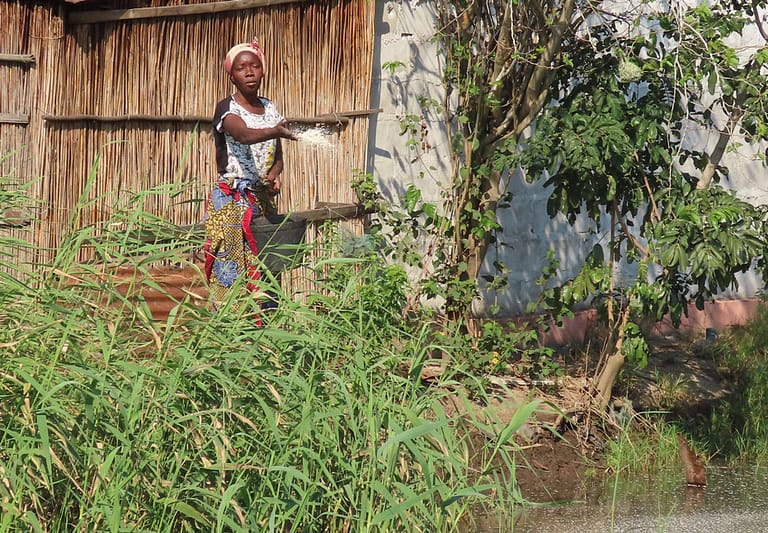“The United Nations currently estimates that between mid-2017 and 2050, the number of humans on Earth will rise by 29 percent, from 7.6 billion to 9.8 billion, mostly in Africa, Asia and Latin America. As a result of that shift, the global demand for protein will outpace population growth, increasing between 32 and 78 percent, according to some estimates and demand could require an additional 62 to 159 million metric tons of protein per year.”
Making Fish Farming Drug-free!

Sustainable tilapia farming
Drug-free tilapia farming, integrated to family sector, will counter the devastation of our oceans and marine life caused by intensive fish farming. This micro fishpond produces 30kg per month of organic tilapia fish.

Women in fish farming
We ensure to address gender equality and integrate women from rural communities who will be responsible to produce fingerlings and duckweed.

SUSTAINABLE AQUACULTURE
In collaboration with rural communities, we intend to build an incubation system to produce an improved breed of tilapia fingerlings to promote the family sector while creating green jobs.

Life thrives in a drug-free pond
Eco-friendly fish farming is also a habitat for millions of other species in the ecosystem. By promoting biodiversity in pisciculture, we provide a framework for the wire-tailed swallow to build a nest.
FOR THE ENVIRONMENT
To ensure sustainable economic growth in rural communities, protect existing ecosystems and restore natural terrestrial and marine habitats which will drive urgent action needed to combat climate change issues.
- Plant mangroves to restore coastal and marine wildlife
- Eliminate use of pesticides in tilapia farming
- Preserve the environment and encourage biodiversity
- Prevent coastal and marine life degradation and loss
Economical
To achieve food security, empower women and girls and improve social fairness. Enhance income of producers in rural areas and guarantee the production-market link, and to purchase and process food from the family sector.
- Local and international markets
- Process fishbones for animal feed in the region
- Food security, rural development and poverty alleviation
- Guaranteed income for the fishermen in the region
